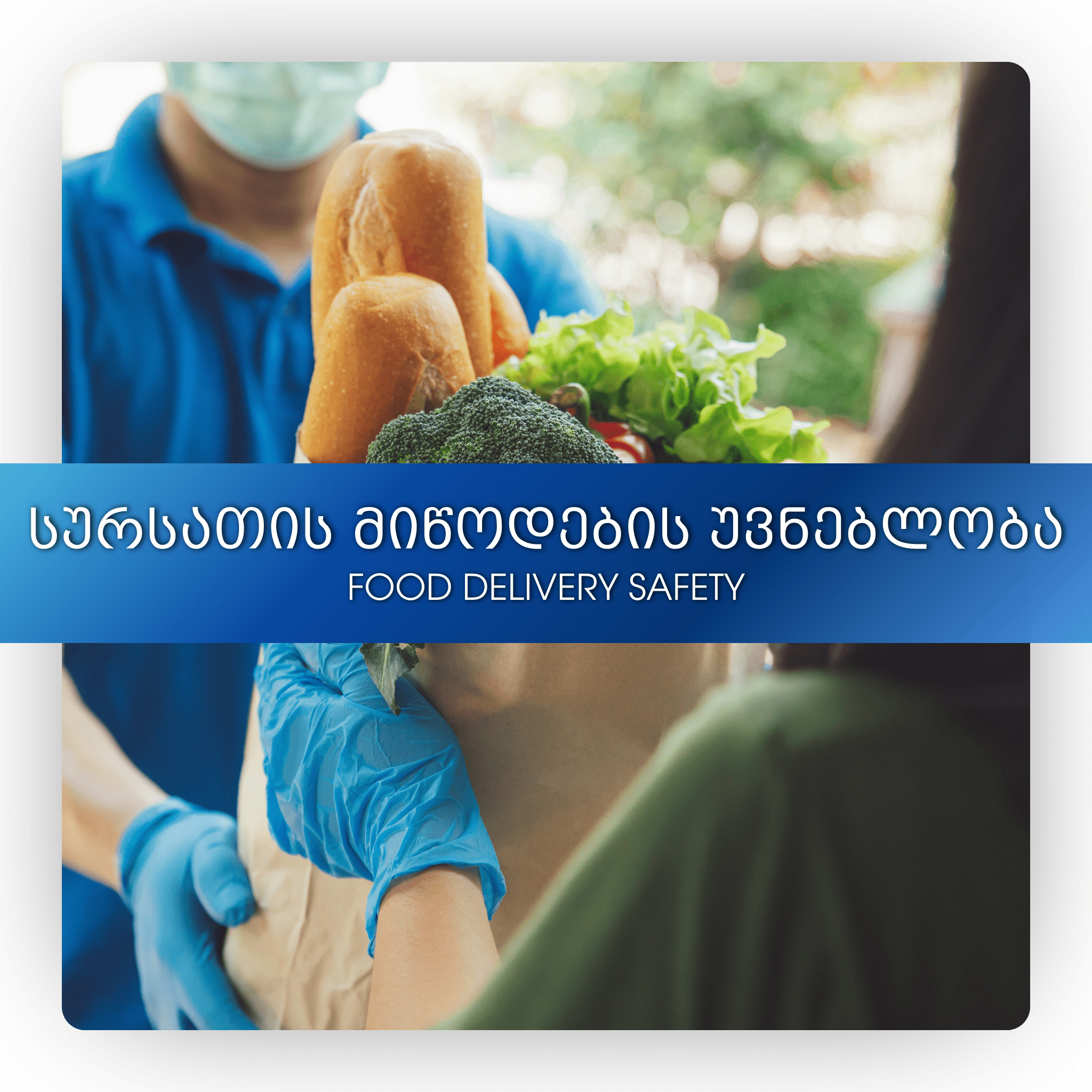Food Delivery Safety
Mail-order food, subscription meal kits, home-delivered groceries, and restaurant deliveries can be convenient. Make sure food safety is part of the package, too. Home-delivered food, like all food, must be handled properly to prevent food poisoning.
Handling delivered food safely is important for everyone, but especially if you are buying food for someone who is more likely to get food poisoning:
◾️ Adults aged 65 and older
◾️ Children younger than age 5
◾️ People whose immune systems are weakened by health conditions or medicine used to treat them, including people with diabetes, liver or kidney disease, HIV, or cancer
◾️ Pregnant people
Meal Kits and Other Shipped Food
Food shipped to your home needs to stay at a safe temperature to prevent the growth of germs that could make you sick.
Before Ordering Food for Delivery
Ask questions first. Research companies and call customer service to ask about food safety practices. Ask how the company responds if food is delivered at an unsafe temperature or is otherwise not safe to eat. Find out if the company provides information with each shipment or delivery on safe handling and preparation of food, including cooking temperatures.
Safe Food Delivery and Receipt
Arrange for delivery when someone is at home so perishable foods such as meat, chicken and other poultry, seafood, eggs, or dairy can be quickly stored in the refrigerator or freezer instead of being left outside until someone is home. If you can’t be there in person, see if a neighbor can store the food until you return. If no one can be at home when food arrives, find a safe space for delivery. Food should be delivered to a cool, shaded, and secure location where pests and rodents won’t be able to get it. Let the company know where you would like them to leave your box. Make sure food is still at a safe temperature when you unpack the shipment.
Examine the items and packaging to ensure they are intact.
◾️ Make sure the company used insulated packaging and materials such as dry ice or frozen gel packs to keep perishable food cold in transit.
◾️ Look for labels that say “Keep Refrigerated” or “Keep Frozen” if you ordered perishable food.
Use a food thermometer to check the temperature of perishable food when it arrives.
◾️ Perishable food that has been shipped should arrive frozen, partially frozen with ice crystals still visible, or at least as cold as it would be in a refrigerator (4°C or below). Even if a perishable food product is smoked, cured, vacuum-packed, or fully cooked, it still must be kept cold.
Store perishable food at a safe temperature.- After you make sure perishable food was delivered at a safe temperature (4°C or below), store it in the refrigerator or freezer as soon as possible until you are ready to prepare it.
Notify the company if food arrives above 4°C- If food arrives above 4°C, don’t eat it, or even taste it, to see if it is safe. Food can be unsafe and still taste, look, and smell OK. When in doubt, throw it out.
Local Grocery Deliveries
Milk, meat, cut fruit, and other perishable foods delivered from a local store or farm also need to stay at a safe temperature. Hot food should arrive hot, and cold food should arrive cold. Food should not be kept at room temperature for more than 2 hours, or 1 hour if exposed to temperatures above 90°F (outside or in a hot car). During delivery, hot and cold foods should be kept separate from each other.
Before Ordering Food From a Local Grocery Store for Delivery
◾️ Ask questions first- Check the grocery store or delivery service website or call them to learn what they do to keep food safe before and during deliveries.
◾️ Be aware of delivery times- If your delivery includes perishable food, be aware of how long it is kept out at room temperature. Perishable food that has been sitting out for more than 2 hours, or 1 hour if it’s above 90°F outside, can make you sick. Germs that cause food poisoning multiply quickly when food is in the “danger zone” between 40°F and 140°F.
◾️ Store perishable food at a safe temperature- Refrigerate it at 4°C or below or put it in the freezer as soon as possible until you are ready to eat or prepare it.
Local Restaurant Deliveries
◾️ Be aware of delivery times- Cooked meals can make you sick if they sit out for more than 2 hours, or 1 hour if it’s above 32°C outside. Delivered restaurant meals should be eaten right away or refrigerated.
◾️ If you have leftovers or are saving a hot food delivery for another day, refrigerate within 2 hours. Make sure you know how long your leftovers will keep in the fridge or freezer.
Safe Food Handling at Home
◾️ Wash your hands and kitchen utensils. Wash your hands with soap and water for at least 20 seconds before, during, and after handling any food and before eating. Wash your utensils, cutting boards, and countertops with hot, soapy water after using them.
◾️ Rinse fresh fruits and vegetables under running water.
◾️ Separate foods to avoid cross-contamination. Keep raw meat, chicken and other poultry, seafood, and eggs away from other foods. Use separate cutting boards, plates, and utensils for these ingredients.
◾️ Use a food thermometer to ensure foods are cooked to a safe internal temperature.
Source: CDC (Centers for Disease Control and Prevention)
